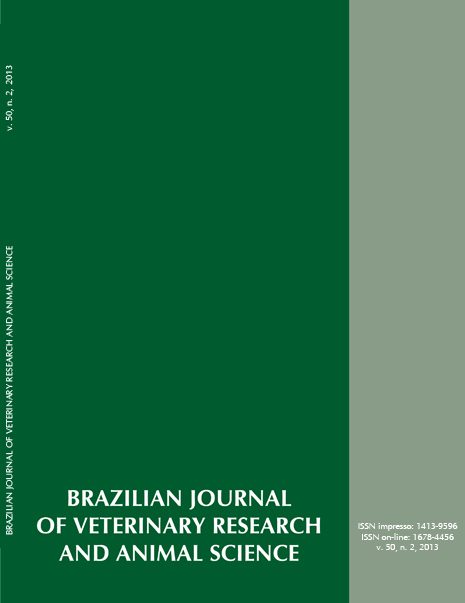Genetic similarity between APEC and Escherichia coli strains isolated from Guaruba guarouba in a survey on healthy captive psittacine birds
DOI:
https://doi.org/10.11606/issn.2318-3659.v50i2p145-151Keywords:
Escherichia coli, APE, Virulence factors, Psittacine birds, Guaruba guaroubaAbstract
The role of psittacine birds as a reservoir of avian pathogenic Escherichia coli (APEC) is not known but would be helpful in understanding the human – animal interface, since the enteric microbiota of these birds consists of Gram positive bacteria. The aim of this study was to identify the presence of APEC in feces of clinically healthy Guaruba guarouba. To do this, we isolated and analyzed E. coli from cloacal fecal samples taken from 87 psittacine birds from six zoologic parks, three commercial breeders and one conservation breeder. Of the 87 birds examined, 46 (52.87%) presented E. coli in feces. The presence of the following eight virulence genes was determined by the polymerase chain reaction (PCR): irp2, iucD, iss, vat, cvi/cva, tsh, astA, and papC, and 29 (63.04%) of 46 E. coli isolates tested were positive at least one of the eight genes studied. The frequency of virulence genes observed in isolates of E. coli were 32.6% (15/46) irp2, 26% (12/46) iucD, 19.5% iss (9/46), 17.4% vat (8/46), 17.4% cvi/cva (8/46), 8.7% tsh (4/46), 4.4% astA (2/46) and 0% papC (0/46). The isolates were grouped in 13 genotypic profiles according to virulence gene combinations, but only 2 isolates were classified as APEC, with the pattern iuc, iss, cvi/cva, irp + and iuc, iss, cvi/cva, irp, tsh, vat +. This study reveals the presence of APEC in clinically healthy captive G. guarouba, suggesting that these psittacine birds may act as reservoir for pathogenic microorganisms. Epidemiological studies are needed to determine the relevance of this species as a reservoir and the implications for conservation of endangered species G. guarouba.
Downloads
Downloads
Published
Issue
Section
License
The journal content is authorized under the Creative Commons BY-NC-SA license (summary of the license: https://





